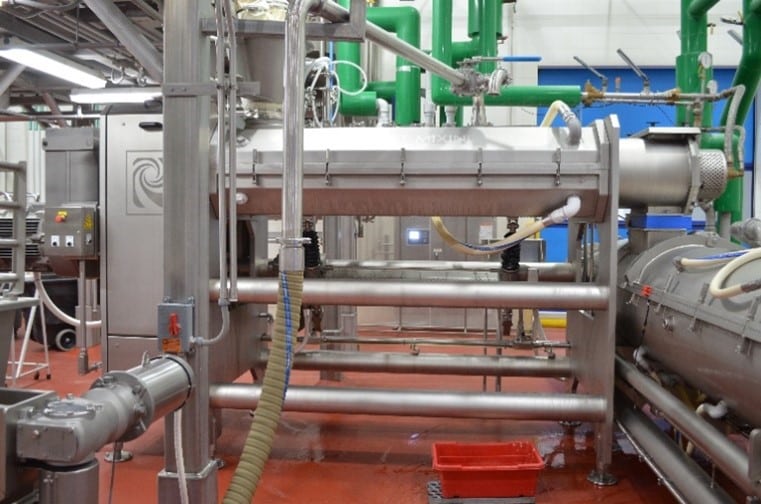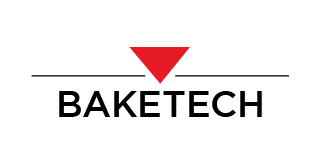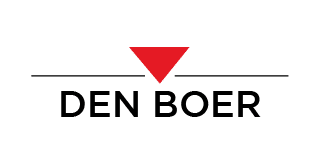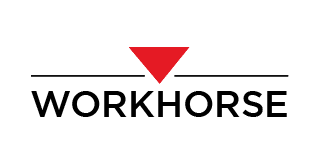Advantages of Continuous Mixing & Batch Mixing for Commercial Bakeries
The mixing stage is a critical point of quality control in the production process for commercially baked foods. Bakers should evaluate two types of mixing when automating their process: batch mixing and continuous mixing. Each has its advantages and disadvantages, and determining the most optimal mixing solution for your bakery depends on several requirements.
Advancements in AMF Fusion technology, an AMF Bakery Systems brand, have improved the reliability and precision of batch mixing processes and made it possible for bakers to convert to continuous mixing through AMF’s partnership with Exact mixing, a Reading Bakery Systems brand and Markel Food Group partner. When looking at the two solutions, bakers must consider their final baked product specifications, total cost, machine throughput, ease of operation, required maintenance, and downstream processes.
While both types of automated mixing solutions improve dough consistency, reduce labor costs, and increase production throughput, we explore below several other advantages and disadvantages of each mixing solution for industrial food production.


Consider The Mix
Batch mixing remains a mainstay of the industry because of its versatility and compatibility with other processes like ingredient delivery and pre-hydration systems. It entails making large batches of dough one set at a time and is suitable for applications with variations in the recipe. At the end of the mixing process, the dough exits the machine, and the machine is ready for cleaning or for the next batch. This process gives high precision and control of the exact makeup of the mixture. Complete control of what goes in ensures the precision of what comes out of the mixer.
During the continuous mixing cycle, ingredients constantly flow through controlled feeds into the mixer, being mixed for a predetermined amount of time and being discharged. Continuous mixing provides high throughput and low energy use compared to mixing dough in batches. Mixing may be done in stages to ensure all ingredients are incorporated properly and produce a consistent product daily.
What Requirements Should Bakers Consider?
Throughput and Cost: Throughput and cost are significant considerations when choosing batch or continuous mixing. Continuous mixers allow bakers to quickly process large quantities of dough and are appropriate for bakers with minimal floor space. On the other hand, batch mixers are essential for bakers with greater footprint flexibility and varied portfolios. When determining the type of mixer to use, bakeries consider the following concerning throughput and costs:
Processing time: The time it takes for the material to flow into the mixer through to the discharge outlet is known as the rate per moment (RPM). For longer RPMs, batch mixing is more appropriate because applications that rely on an even product blend need to be mixed quickly.
Productivity: Continuous mixing offers a faster process for high volume throughput in a shorter time, although continuous mixing is less expensive than the highest production rates. Batch mixing is cheaper than continuous mixing for lower and mid-size production rates. Additionally, batch mixing requires less equipment and can be easily adapted to changing production needs.
Energy costs: Continuous mixers typically utilize less energy per throughput cycle than batch mixers as they do not require frequent starts and stops.
Labor costs: Like energy costs, with continuous mixing, the labor costs and human intervention are lower than batch mixers.
Batch Mixing for Recipe and Process Control
Regarding precision and ingredient control, bakers need to consider variations in the end product, such as flavorings or inclusions. Continuous mixers quickly process larger amounts of ingredients and work best for applications with limited ingredient changes. Precision and control factors include:
- The number of different ingredients to blend. Generally, dough recipes suitable for continuous mixing are limited in ingredients.
- Recipes with a higher ingredient formula require a longer mixing period, making batch mixing more suitable.
AMF Fusion’s batch mixing systems are designed to optimize control over ingredients, mixing, and dough parameters. Efficient glycol cooling jackets on bowl mixers and AMF’s proprietary Mixer Guardian technology allow the operator to carefully monitor and adjust machine parameters to maintain a constant temperature and consistent dough structure. Intuitive operator controls and alarms allow more control over mixing and refrigeration times. This cuts down on the training and onboarding needed for new production personnel. In addition to giving operators more control, AMF horizontal batch mixers are designed to speed up other time-consuming processes upstream.
RBS Continuous Mixers can be customized with material handling systems to make baking systems user-friendly and reliable. They are designed with Loss-in-Weight feeding technology, and all metering and mixing procedures are monitored and initiated by the control system. Hence, the operator is always able to confirm and modify as needed.
Machine Sanitation
Comprehensive cleaning and a sanitary operating environment are critical to reducing contamination risk in the baking industry. Regular sanitation is a must on all bakery equipment, so ease of access is essential to keep in mind when deciding what kind of mixer is best for your application.
AMF batch mixers are designed for simple, efficient sanitation and help reduce the risk of cross-contamination between batches. Bowls and agitator assemblies are engineered for sanitary design to be easily accessed and expeditiously cleaned. AMF Fusion mixers, with their open frame designs, are engineered to be easily sanitized and can significantly reduce labor costs by decreasing the time needed for cleaning. Critical aspects of the hygienic design include:
- Protected connections
- Minimal flat surfaces
- Welds that do not trap particles
- Tubular frames that shed water rather than accumulate it
These features expedite the work of sanitation teams, making it easier to access every part of AMF Fusion Batch Mixers.
RBS Continuous Mixers are built to eliminate instances of contamination through quick and easy changeovers, making them easy to sanitize, maintain, clean, and inspect due to the clamshell design.
Conclusion
Batch and Continuous mixing will continue to be the most reliable forms of commercial bakery mixing for years to come. Continuous mixing is economical for bakeries with space restrictions and provides a fast throughput. Bakers needing high throughput can do so with large-capacity batch mixers integrated with efficient ingredient handling systems. Every mix is different, so researching the full range of options can make considerable differences in quality and cost over time. AMF Fusion and Exact Mixing technologies provide the control and consistency needed to scale the production of baked goods through automated mixing.
Contact the AMF Fusion team today to discuss your current mixing project.













